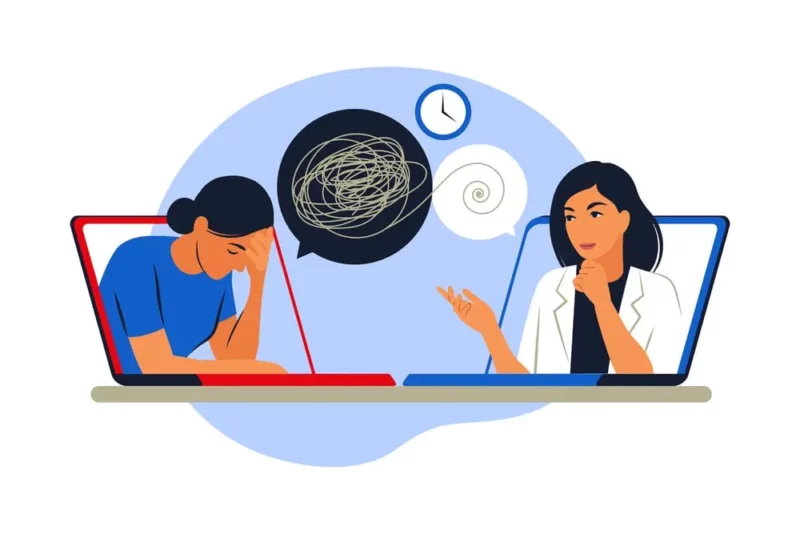8 Benefits Of Telepsychiatry For Patients

Driven partly by the national shortage of psychiatrists in the US – particularly in areas such as child and adolescent mental health – Telepsychiatry has seen a huge growth since its humble beginning as a branch of telemedicine. Today, Telepsychiatry – once reserved for medical facilities under the care and supervision of onsite staff – has migrated into people’s homes — the application is not only incredibly beneficial to patients but compliant with HIPAA standards.
What is telepsychiatry?
Telepsychiatry is the modern application of telemedicine models to the field of psychiatry. The term is broadly used, due to the advances of today’s technology and how it shortens distances and erases borders, to describe many services. Nevertheless, Telepsychiatry normally refers to the delivery of psychiatric services, assessment, and/or care, through telecommunication technology. Currently, these types of services are offered through private practices, intermediary companies partnered with medical facilities, or as group psychotic models.
Telepsychiatry is an incredibly innovative practice that is revolutionizing healthcare, due to its many benefits and advantages. It is being exploited and incorporated by various companies – including some of today’s biggest tech companies – into their products. Telepsychiatry for patients offers an effective alternative to traditional in-person consultations — giving patients new cutting-edge, around-the-clock tools, for their fight against a particular issue.
Doctors work closely with patients to identify issues and recommend treatments. Telepsychiatry allows physicians to develop a personalized treatment plan, prescribe medication, and link to other devices – such as wearable technology and remote patient monitoring systems – it grants both parties a way to supervise and monitor each case.
Telehealth psychiatry services can be employed for:
Home-based telepsychiatry: for all ages, including adults, adolescents, senior citizens, and children.
Forensic telepsychiatry: mainly used to offer remote care for inmates, in prison or correctional facilities. The practice can also be employed for extreme cases such as suicide watch. It is also leveraged by parole boards for evaluations and consultations.
On-demand: provisional telepsychiatry consultation for emergency cases — such as evaluating new patients, never before seen by a doctor, that have exhibited one of the following tendencies: depression, maniac, acute anxiety, psychotic, violence, homicidal, suicidal.
Telepsychiatry is incredibly effective when it comes to most mental health diagnoses. Its telemedicine platform can be used to treat cases of anxiety, PTSD, OCD, eating disorders, insomnia, ADD, bipolar I and II, schizophrenia, borderline personality disorders, ADHD, and many more.
Benefits of telepsychiatry
As of March 2020, partly driven by the COVID – 19 pandemic, over 39% of all telemedicine patients required psychiatric help. In a matter of months, counseling of this nature increased by 20% in adults and over 43% in teens. 3 in 10 adults in the US alone reported symptoms consistent with depression and anxiety disorder. Mental health, and substance use disorders blossomed and skyrocketed since 2020 — and that increase in need has shifted the way the healthcare industry delivers its services and products. Their biggest weapon today, to face this demand? Telepsychiatry

Let’s take a look at why telepsychiatry is a game-changer when it comes to delivering efficient care.
Cost-effective
Since 1999, Medicare and Medicaid reimbursement for all kinds of telehealth services has expanded. Today, the requirements of providers have been heavily reduced, and the government is constantly giving out grants to fortify most services and support telepsychiatry program adoption. Most telepsychiatry models and practices take insurance — Also, due to the lack of physical infrastructure, most telepsychiatry practices have fewer operating costs. This translates to a reduction of direct costs compared with face-to-face treatment.
Accessibility
Like all Telehealth services, telepsychiatry’s biggest advantage is the fact that it is easy and simple — if a patient has a computer, a tablet, or even a phone they can schedule an appointment, and log in wherever they are. No traffic, no logistics issues, no excuses.
Comfort
Patients ultimately feel more comfortable in their home — or their safe space. In many cases, telepsychiatry can offer people a safe environment to vent and work out their issues. This is particularly true of patients that suffer from certain phobias, severe anxiety disorders, or issues that might make them feel distressed in a face-to-face environment.
Time – optimization
The average person loses 1 to 2 hours commuting to their doctor’s office. Not only going to the appointment but getting sidetracked afterward. By editing out the need to travel, telepsychiatry allows patients to save up time – and money.
No Need For Big Tech
Today, thanks to cutting-edge, incredibly stable, and resourceful telepsychiatry platforms, the patient no longer needs special technology or skills to access a meeting. Any technology with video and or audio capabilities – such as a tablet, computer, or phone – will suffice.
Borders
Patients are no longer limited by distances — one of the main benefits of telepsychiatry is that patients can maintain a treatment plan without actually visiting a doctor’s office. This means that they can continue making their appointments while on vacation, or if they need to relocate to another city. They can also schedule meetings – continents away – with specialists.

Treatment effectiveness
There is substantial evidence that telepsychiatry is incredibly effective and satisfying to patients. Not only to patients but to doctors and their staff. It grants both parties the same level of care as an in-person meeting without the trappings and distractions inherent to them.
The effectiveness of telepsychiatry
Today, telepsychiatry, now over sixty years old — the method has gone through many changes and evolutions. It has been perfected and thanks to all those tweaks it is a well-recognized and established method providing key mental health services not only in the US but worldwide. For example, The American Psychiatric Association (APA) fully endorses video conferencing as a great and highly effective means of psychiatric healthcare delivery. The American Telemedicine Association (ATA) is another organization that stands by this treatment platform. Telepsychiatry offers great benefits, including the ability to reach rural areas, and offer effective treatment with less cost associated with them.